Don't wanna be here? Send us removal request.
Text
Student Name: Arshdeep Kaur
Professor Name: Tamara Faires
Course code:( 320) Math and science experiences for children
1. Explain how your STEM presentation supports STEM Learning. For Example, how does your experience support science? Include an Example. How does your experience support technology? Include an example. How does your experience support engineering (If applicable)? Include an example. How does your experience support Math Learning? Include two examples here.
In our STEM presentation, we lay out a comprehensive plan for advancing STEM education across various subject areas. A practical science exercise that provides a grasp of fluid dynamics and meteorological phenomena is creating a tornado in a jar. For the activity, we choose a round jar, water, Dish soap, and Glitter. The water whirls like a tornado as children witness its interaction with the liquid and air, through the observation of a natural phenomenon in a controlled environment. It helps to learn about weather patterns and physics through this hands-on activity terms of technology, our experience inspires children to engage with various light sources and investigate the properties of manipulated light. We explored with cardboard box flashlights, mirrors, and colored filters in the "Exploring Light" activity to see how light can be controlled and manipulated. It supports reflection and refraction, for instance, by shining a flashlight inside a cardboard box filled with animal toys or clay and seeing how the color of the box on shiny papers varies depending on the light's angle.
Engineering students are stimulated to think creatively and strategically when we make animal models with Playdough and observe them in different lighting conditions. When creating their animal figures, like crocodiles and seashells with clay we utilize playdough and pay attention to shape and structure. Next, they look at how different light angles affect how their ideas seem, which motivates them to approach engineering to maximize both visibility and aesthetics.
Finally, two activities support math learning: counting and categorizing. Counting the suns or cotton bails to indicate their favorite weather in the data display activity is one way to learn about basic counting abilities. Mathematical concepts can also be applied practically by observing shadows and examining light angles, integrating geometric and spatial connection ideas.

2. Explain how your book choice and data display connect with your STEM experience.
The book choice for our STEM presentation, "Weather and the Seasons," is the foundation to improve children's understanding of weather-related ideas. The narrative probably explores different weather patterns and seasonal variations, which fits in well with the topic of our hands-on activities. The book stimulates children's interest in weather occurrences with its colorful graphics and approachable language, encouraging curiosity and encouraging them to make connections between the narrative and their own experiences.
Furthermore, by giving children practical experience with data representation and analysis, our data display activity enhances STEM education. Children are engaged in a hands-on investigation of weather-related facts using the display, which incorporates weather-related aspects into the activity, such as using suns to symbolize sunny weather and cotton to represent rain. In addition to promoting active engagement, this interactive method helps participants comprehend mathematical and scientific ideas about weather patterns and data analysis on a deeper level.
Through the incorporation of literary works and data visualization in our STEM demonstration, we establish an engaging educational setting that allows kids to investigate weather-related subjects from several angles. Children are enabled to develop critical thinking abilities and improve their comprehension of STEM subjects in a meaningful and engaging way, whether through storytelling or hands-on activities.
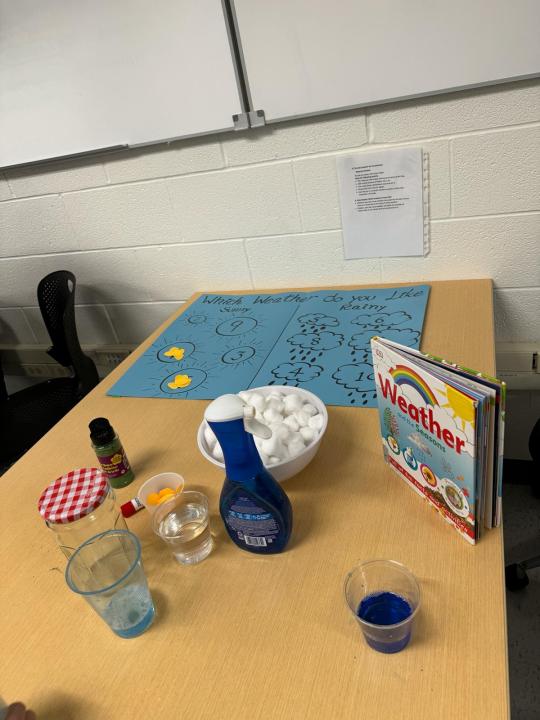
3. Choose one of your favorite STEM presentations and explain why it is your Favorite. Justify the age group for the experiences you discussed. Use references to support your thoughts.
The "Exploring Light" presentation is my favorite STEM activity. This particular activity stands out in that it engages children's senses and stimulates their curiosity through hands-on investigation. Through colored filters with shiny papers, flashlights, and mirrors, children can do quick experiments and get insight into how light affects various materials. Preschoolers between three and five are especially well-suited for this activity because of their developmental stage and innate curiosity.
Children in this age range are thought to be in the preoperational stage of cognitive development, according to Piaget's theory of cognitive development. This stage is marked by rapid language development, greater inventiveness, and a developing curiosity about the world around them (Mauluddin & Solehuddin, 2023). Furthermore, Wan et al.'s research from 2021 adds weight to the notion that exposing children to STEM ideas early on like investigating light, for example; can benefit their long-term cognitive development and academic achievement. The "Exploring Light" experience supports preschoolers' cognitive development, encourages a good attitude toward science and inquiry, and successfully engages them in STEM exploration.
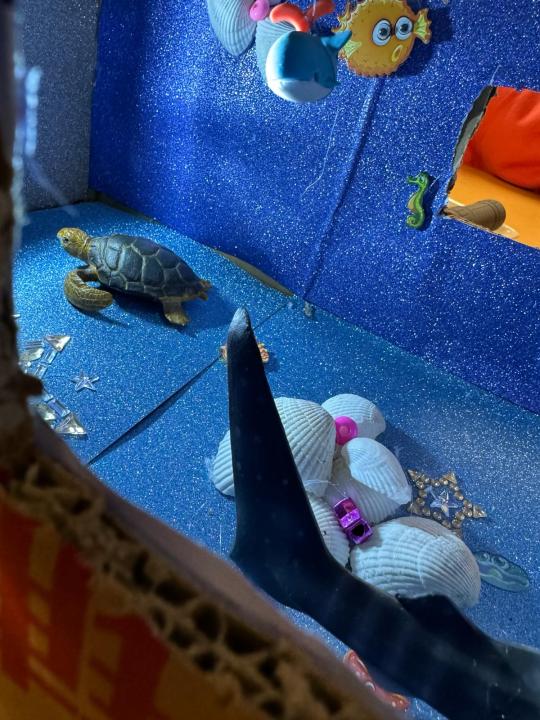
4. identify and discuss two (2) new learning about STEM(anything from your Math and Science COURSE) for you over the past ten (10) weeks and why. Please be specific and include examples.
One of the most essential STEM lessons was that children may learn science through hands-on, developmentally appropriate experiences. At the "Tornado in a Jar" display, I chose this activity for many reasons like, this activity helps children to make and see a vortex model to learn how tornadoes form from circular fluid motion. At the "Exploring Light" station, mirrors, colored filters (shiny paper), and light source angles were used to test light qualities and behaviors. These multimodal experiments made optics and meteorology clear.
Learning how carefully integrating children's literature may ground STEM topics in familiar, narrative situations to improve comprehension was another important lesson. The hands-on "Exploring Light" station promoted light experimentation. A high-quality, relevant storybook introduces and frontloads crucial terminology and pictures, activating past knowledge children may use for STEM ideas. Quality STEM read-aloud prepares young learners to approach and understand future inquiries positively. The scientific and mathematical concepts are grounded in memorable literary characters and plots. Children's literature boosts STEM literacy by improving cross-disciplinary skills including comprehension, inference, and imagery. STEM read-aloud can improve scientific teaching by being carefully chosen and integrated.
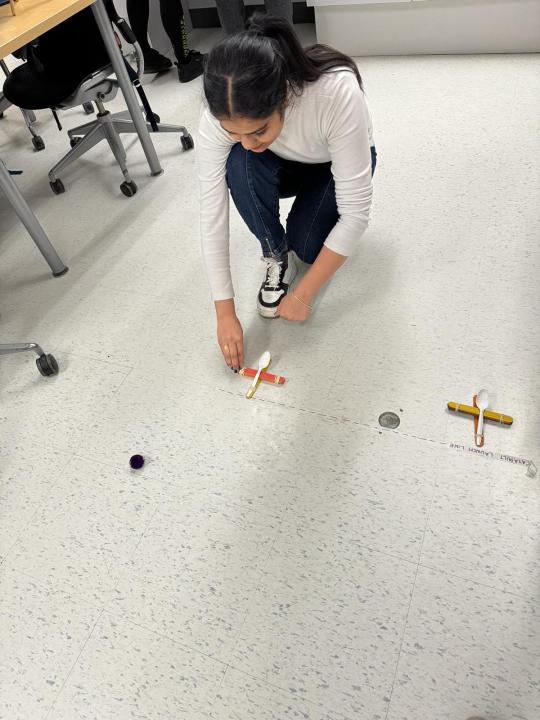
0 notes
Text
Data Displays and Geometry
Name of student: Arshdeep Kaur
Professor Name: Tamara Faires
Date: 09 March 2023
Identify something new you learned today and explain why it is new to you (based on data display content/workshop and geometry content/ workshop). Explain how you will use what you have learned in your work with children.
I have learned about the station's educative and fanatical aspects in terms of both data display and geometry content. Fans of building stations like the Monster stations depict an engaging aspect as they must be fully aware of what is required of them to build a complete shape, which essentially determines their ability to understand sound. Additionally, the cognitive skills acquired are immensely beneficial as they are lifelong skills necessary for daily undertakings. The station helps equip participants with creativity, logical reasoning, and critical thinking awareness to help individuals solve arising challenges. The agility required to understand the different shapes and sizes and the insight of one's ability to fill things like their names based on the sizes of different shapes provided makes the station more realistic and engaging. Educationally, the ability to connect the dots according to their number, thus creating different styles of shape, is of great mathematical gain. The poetic nature of the Leaf Man equips the children with a literature foundation for future exploitations.
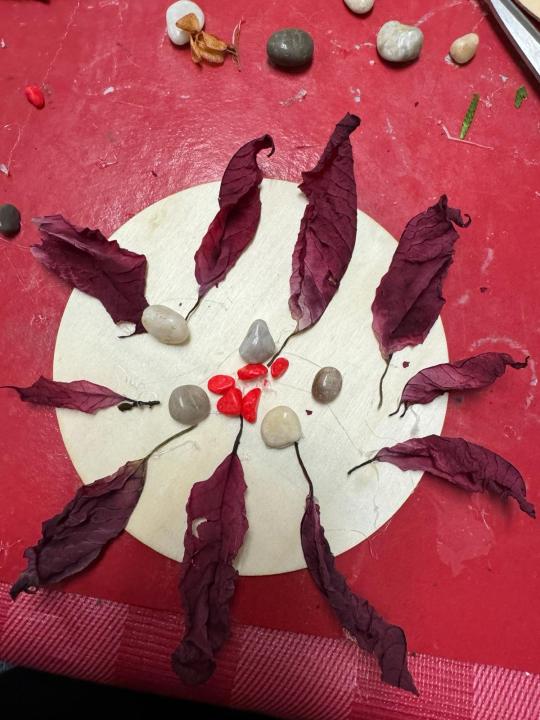
Whatever I have learned here can be practicable for children to give a solid educational foundation. The art of dot numbering will be helpful in general math numbering while dealing with children as it will provide ease in number mastery due to the ease and fun aspect that is child domiciled. Building the Monster can be used again to integrate math concepts based on its creative concept. This activity is poised to reinforce their counting and understanding of numerical concepts. They can also learn about the Monster's different body parts, and shape Monster is basic science, thus developing a sense of shapes and geometry through this fun, engaging activity.
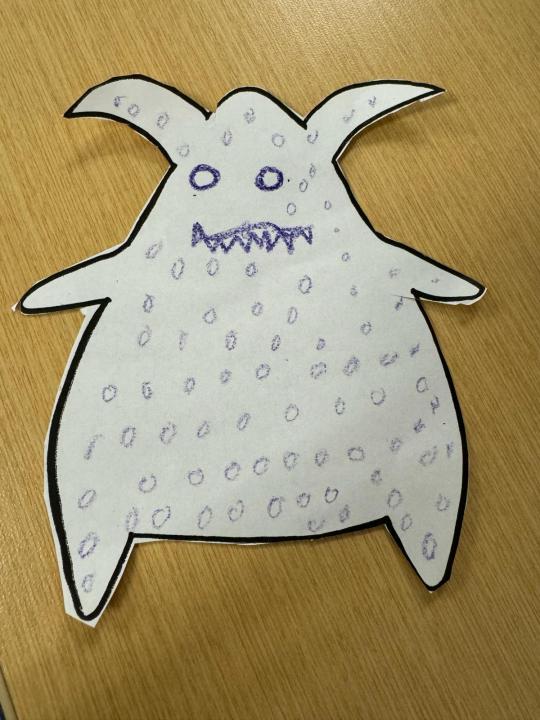
Furthermore, helping children understand the importance of resilience has proved helpful in accomplishing any activity. All these will help children develop a positive attitude toward taking on any task allocated to them. The early development of literacy skills, which is seeable from the station activities, is a solid foundation for the children's educational path.
Choose two of the stations from today’s workshop (one choice must be data display and one choice geometry). Explain the learning involved for the children (focus on math learning). For both choices, justify the age group.
The "Leaf Man," according to Kukkonen & Chang‐Kredl (2018), is an insightful picture book that takes children on a wild journey through the changing seasons, an entirely leaf-inspired story. The story gives the children the different shapes and forms of leaves as they transform. This helps the children to have a good knowledge of different forms of shapes that are math-bound (Kukkonen & Chang‐Kredl, 2018). The observational skill is developed as the children explore the intricate collage build displays made from leaves. This enhances their ability to notice more observational details from the observed shapes, colors, and surface textures. The assembly of the Monster in Station 14# entails assorting different parts of the Monster and sorting them into the dots on the dice. Miller (2018) articulated that building a Monster is a great way to integrate math concepts into a fun and creative activity. This activity teaches children to count from the dice dots and recognize the number on the chart to build a monster. This activity can reinforce their counting and understanding of numerical concepts. Apart from this, they can also learn about the monster's body parts and shapes. Through this engaging activity, they can also develop a sense of shapes and geometry. Additionally, this aids in the observatory and seasonal awareness of the child as it involves patterns and sequences (Miller, 2018).
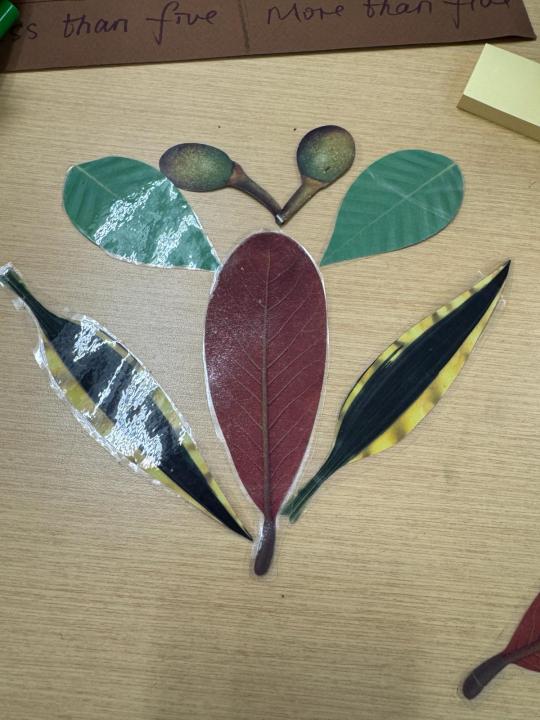
Leaf Man and Creating a Monster are preschooler-oriented children, generally in the preschool and early elementary school age group. The clear visual and appealing college display in the Leaf Man and the Monster is intended to capture the attention of preschoolers, who are majorly drawn to colorful and appealing visuals for their maximum attention. The curiosity developed in Leaf Man and the Monster on nature and shape assortment is developed to help the children appreciate the power of nature and shapes, which defines the themes. Additionally, Wang et al. (2020) also supported the analogy that the texts used in Leaf Man and the shapes used in the Most Monster illustrations are repetitive. This is to make them more accessible for the children who are building their literacy knowledge and as a form to encourage participation and full engagement during sessions (Kritchevsky et al., 2023). Furthermore, Gao et al. (2019) also articulated that the Monster and Leaf Man stations also adduce the imaginary aspect for the children. The unsorted shapes and the Leaf journey invite the children to use their creativity and imagination to determine potential outcomes, thus justifying the age group.
Guess the number of marbles
Deals with the Marble numerability guess. This gives the children the right footing on numerical challenges and to have the ability to solve simple numerical equations pooled or of a singular nature (Kukkonen & Chang‐Kredl, 2018). This insightful station activity proceeds in additionally helping in determining different colors as marbles are displayed of color variance thus a step on distinction of objects. Furthermore, this enhances the observational skills as the station mandates the children to distinguish in the marble pools different colors and shapes of marble displayed to them. Apart from the numerical advantage, the marble also gives a geometric shape aspect. Based on size, the marble can help children with starting knowledge on small geometric shapes used in object math solving. Kukkonen & Chang‐Kredl (2018) also added that the station also displays kinds of objects that can be made out of marble arrangement based on their number. All these coupled together give a sound knowledge of both numerical and geometrical logical ability to the children to overcome simple challenges.
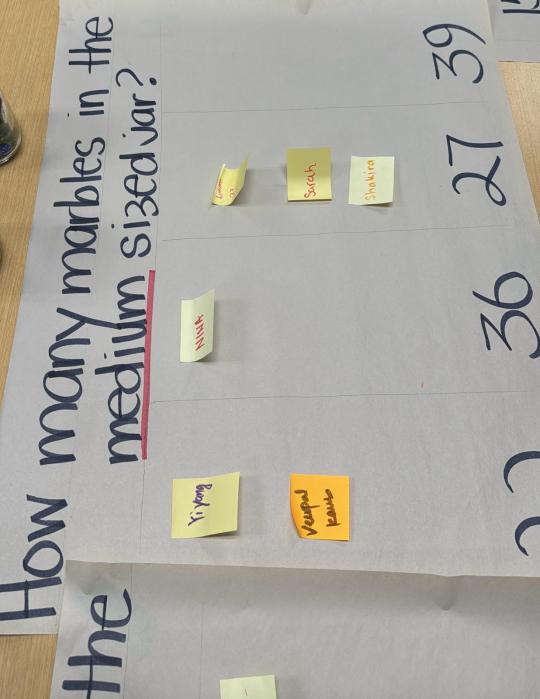
What was your favorite station from data displays, and why? What was your favorite station from Geometry and why?
Data Display And Why
Leaf Man
The Leaf Man station stood out to be the best under-data display. This is due to its captivating analogy of the imaginary journey through different landscapes. The environmental awareness it creates allows one to appreciate how the environment can be used as a teaching tool to elevate the perception of divergence in children primarily. The station creates the ability of one to possess cognitive skills. These skills, such as problem-solving and logic, are essential in equipping children to tackle known and unknown equations if they arise, as this provides them with the knowledge to understand and analyze different logical challenges. This station also observes persistence and resilience in the Leaf Man's journey. Scaling those different landscapes while asserting the college leaves to depict the intended results required resilience to overcome the challenges accompanying the journey and persistence to avoid deviation, which could have led to a different visual creation altogether.
Additionally, the stations provided an environment for emotional expression and regulation. The journey, as imagined, associates itself with emotional awareness, which helps to understand the children's emotional fluctuations. This helps in knowing how to deal with arising stress, as the display helps give a clear picture of the children's emotional trends.
Geometry And Why
Exploring Puzzle, Light, And Shapes.
Exploration of puzzles, light, and shapes under geometry captured my attention due to the in-depth anticipatory educational gain it potentially pours to the children. The broad and straightforward understanding layout makes it a more outstanding station of importance. The station, among other things, also covers the cognitive skills it renders to the children. The ability to problem solve the puzzle and sort the shapes and lights helps solve complex and simple displays. This also helps one gain critical thinking and logical reasoning skills to help solve puzzles and shape assortments. Working on puzzles, shapes, and lights also helps one gain social skills. This is due to collaboration, which promotes social interactions and cooperation. This further creates room for idea sharing, developing teamwork skills, and mutual respect, thus facilitating strong positive relationships.
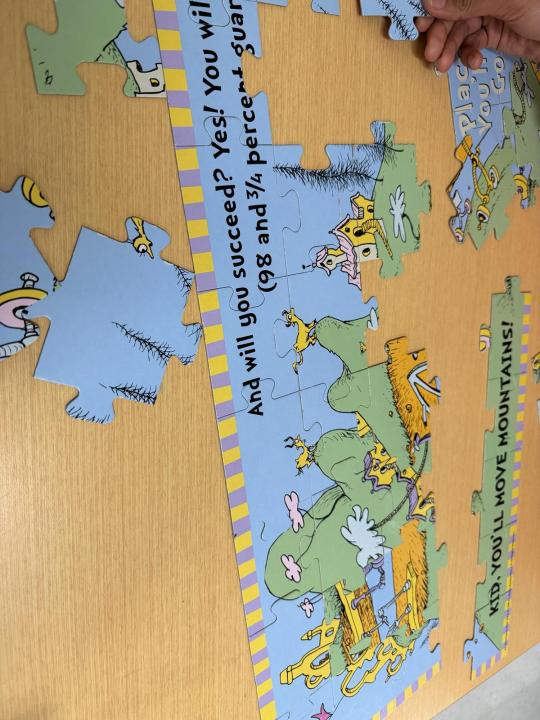
The station also helps build self-confidence. Successful completion of a puzzle challenge or an assortment of shapes or light deterrence helps boost the actor's self-confidence and self-esteem. This provides a sense of accomplishment, thus reinforcing the ability to tackle challenges and achieve the desired goals. The station offers a humble space to engage in active play, which promotes mental health among the actors. Walking while assembling and assorting shapes and puzzles also prevents dizziness by the actors. The encouraged movements significantly contribute to overall health and mental development. Imagination and creativity are also significantly boosted on stations, which is achieved by providing open-ended materials and environments for exploration and discovery of new shapes, lights, and puzzle tricks. Engaging in the station gives a pre-imaginary sense of the accomplishment of the undertaken task. This allows for the creation of dynamic innovations to deal with challenges positively and achieve the desired accomplishment.
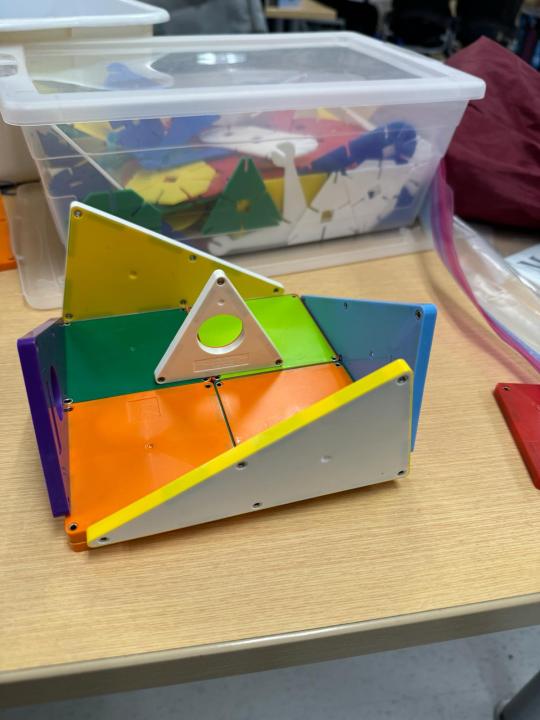
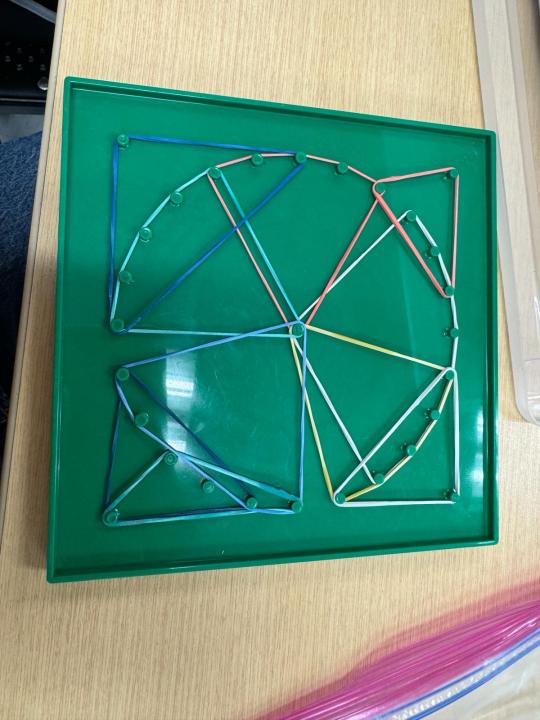
0 notes
Text
FAM 1249-Math and Science Experiences for Children
Student Name: Arshdeep Kaur
Professor: Tamara Faires
FAM 1249-Math and Science Experiences for Children
Student Name: Arshdeep Kaur
Professor: Tamara Faires
A) Choose two of your favorite stations from today’s workshop. Share why. Discuss the math learning (concepts) involved in both stations for children.
My favorite stations for today’s workshop are Station 4 which has the game “Snakes and Ladders” with the game “Brown Bear, Brown Bear, What Do You See?” Though in different ways they both create unique ways for children to explore math through play. As such, several factors set these games apart when it comes to teaching children mathematics concepts.
Why this Game Stands Out.
The Snakes and Ladders is a traditional board game encapsulating several fundamental mathematical principles. The game involves a combination of fortunes (dice throws) and the thrill associated with scaling up ladders or plunging snakes. This excitement can be an effective instrument for informal education for children. Math Concepts Involved in the Game:
The game encompasses counting, addition, subtraction, and probability which are taught enjoyably through this board game. The game helps understand numbers as they use dice numbers to count the steps they move up. Moreover, the game introduces learners to probability by showing rolling dice is random and there are six sides with equal chances of appearing. Also, snake and a Ladder encourages strategic thinking and planning despite being heavily based on luck by letting players make choices that can affect how they progress in the game.
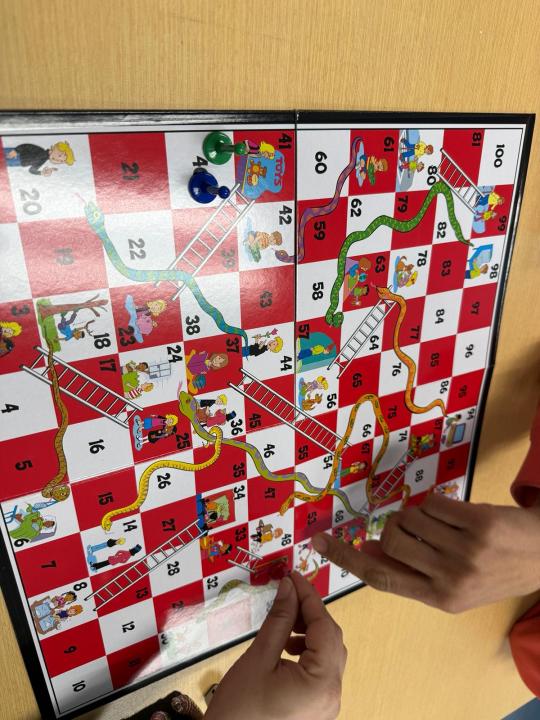
Brown Bear, Brown Bear, What Do You See? Why the Game Stands Out
At this station mathematical instruction are expressed through narrative, drawing inspiration from the well-known children's book "Brown Bear, Brown Bear, What Do You See?" It is especially good at drawing in young learners with its predictable, repeating text and well-known characters, which can be modified to incorporate mathematical ideas. Math Concepts Involved in this Game:
This game provides children with an opportunity to learn some fundamental mathematical principles in a stimulating and interactive manner. Children can recognize patterns better as they see the repetitive structure of the story; therefore, they can predict and understand number sequences, which is important for understanding more complex mathematical concepts. Moreover, this narrative’s succession through various animals and colors is helpful for teaching sequence and order prerequisites for understanding numerical intervals and math operations. Furthermore, these discussions help reinforce color and shape recognition foundations for early math skills. This activity encompasses color sorting which encourages children to sort things which are also basic in math. These activities stimulate cognitive development in children and also expose them to core mathematical ideas which make learners enjoy.
For one of the experiences discussed in 1. A, justify the age group the experience is appropriate for using examples and references to support your thoughts.
The experience of participating in the game of snakes and ladders is appropriate for learners between the ages of 5 and 8 (Hornburg et al., 2021).(Hornburg et al. (2021) argument rests on the capabilities for development and educational needs within this age bracket as well as the mathematical concepts that are integrated into the game. Mulyawati and Windiyani (2020) also add that this group of children falls under early years of formal schooling where knowledge in mathematics should be solid. They are learning to recognize numbers, understand sequence, and develop early problem-solving skills, all of which are reinforced through "Snakes and Ladders."(Hornburg et al., 2021).
Number Recognition and Counting :In most cases, by this age, children can recognize numbers but know little about their order. "Snakes and Ladders", directly supports this skill development by requiring players to recognize the number rolled on the dice and count that many spaces to move their piece on the board (Vogt et al., 2020). If a child rolls a 4 for instance, they must count four spaces forward. Such application helps them attain a firm understanding of number sequences (Vogt et al., 2020).
Probability Basics : Björklund et al. (2020) explain that a child between 5-8 years begin to have an idea about chance hence Snakes and Ladders serves as an avenue for introducing basic probability. The game’s dice rolling randomness allows kids to become aware that some results could be uncertain thereby leading them into early probability observation/discussion about likelihoods of getting particular numbers when rolling a die (Björklund et al., 2020).
Strategic Thinking and Planning :While Snakes & Ladders does not have as complex strategic elements as some other games do, yet its strategy aligns best kids at this age who are starting to grow an ability to plan ahead and make choices based on possible outcomes (Daucourt et al., 2021). The decision of whether to take a risk or play it safe based on their position relative to snakes and ladders on the board is a basic strategic thinking.
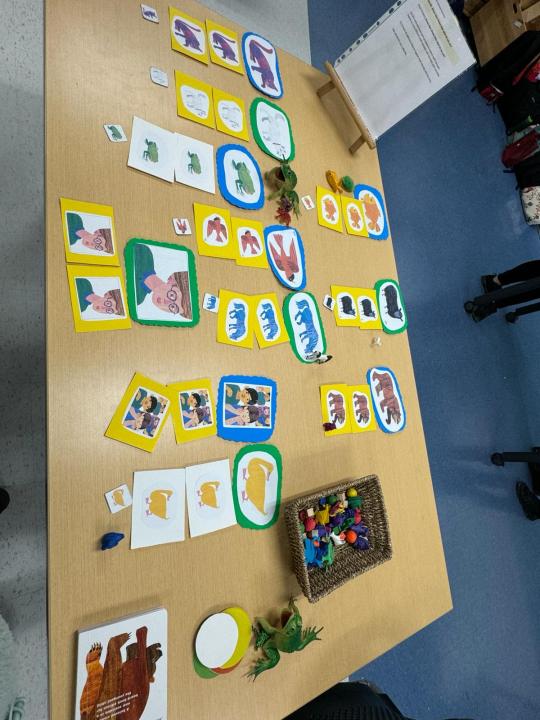
. Discuss how educators can use the language of math for the experience you discussed in 1. B). Provide one example.
The language of math can be exactly used by educators to give the game 'Snakes and Ladders a richer meaning in children aged between 5 and 8(Mulyawati & Windiyani, 2020). Educators may introduce mathematical words into the game and facilitate discussions that emphasize mathematics, which will make kids become more engaged in the topic and understand it better. This approach not only reinforces learned skills during the game but additionally helps children perceive math as part of daily activities rather than abstract theory acquired from school (Mulyawati & Windiyani, 2020). Also, when facilitating a game of Snakes and Ladders, educators can intentionally use mathematical language to describe actions, outcomes, and strategies. Operations should include such details as names of numbers rolled; number of spaces moved, what they contain, or even predict future ones. As such they help internalize concepts associated with mathematical subjects. For Example, Instead, after rolling out five on the dice while playing the game one could say,” You have rolled out five let us count five steps together when you are moving your piece.” Then while helping to move the object learner should be encouraged to count aloud, e.g. “one, two, three, four, five”. After which the trainer should ask the learner,” You just landed on a ladder! How many spaces will that take you up? Let’s count them as we go.” Educational integration requires snakes and ladders since teachers effortlessly incorporate basic calculations through interactive play. Learner’s aptitude for number recognition improves by naming those on dice before counting movements closely. Moreover, the board serves as a real-life case for one-to-one correspondence whereby each move made links back to a certain number which is thrown hence ensuring that these numbers are related things that one can hold (Mulyawati & Windiyani, 2020). From another stand point strategic conversations between teachers about game strategies such as the effects of a ladder or how to avoid snakes, promote early strategic thinking. These exchanges make children plan and think before making their next move since they think critically. Mulyawati and Windiyani, 2020) further explain that by infusing math language into “Snakes and Ladders”, educators can transform it from an ordinary board game into a practical teaching aid. Not only does this approach make maths learning more enjoyable, but it also shows learners that mathematical concepts can be applied in different situations thus supporting a deeper and an intuitive comprehension of mathematics for learners.
Brown Bear, Brown Bear, What Do You See? Why the Game Stands Out
At this station mathematical instruction are expressed through narrative, drawing inspiration from the well-known children's book "Brown Bear, Brown Bear, What Do You See?" It is especially good at drawing in young learners with its predictable, repeating text and well-known characters, which can be modified to incorporate mathematical ideas. Math Concepts Involved in this Game:
This game provides children with an opportunity to learn some fundamental mathematical principles in a stimulating and interactive manner. Children can recognize patterns better as they see the repetitive structure of the story; therefore, they can predict and understand number sequences, which is important for understanding more complex mathematical concepts. Moreover, this narrative’s succession through various animals and colors is helpful for teaching sequence and order prerequisites for understanding numerical intervals and math operations. Furthermore, these discussions help reinforce color and shape recognition foundations for early math skills. This activity encompasses color sorting which encourages children to sort things which are also basic in math. These activities stimulate cognitive development in children and also expose them to core mathematical ideas which make learners enjoy.
For one of the experiences discussed in 1. A, justify the age group the experience is appropriate for using examples and references to support your thoughts.
The experience of participating in the game of snakes and ladders is appropriate for learners between the ages of 5 and 8 (Hornburg et al., 2021).(Hornburg et al. (2021) argument rests on the capabilities for development and educational needs within this age bracket as well as the mathematical concepts that are integrated into the game. Mulyawati and Windiyani (2020) also add that this group of children falls under early years of formal schooling where knowledge in mathematics should be solid. They are learning to recognize numbers, understand sequence, and develop early problem-solving skills, all of which are reinforced through "Snakes and Ladders."(Hornburg et al., 2021).
Number Recognition and Counting :In most cases, by this age, children can recognize numbers but know little about their order. "Snakes and Ladders", directly supports this skill development by requiring players to recognize the number rolled on the dice and count that many spaces to move their piece on the board (Vogt et al., 2020). If a child rolls a 4 for instance, they must count four spaces forward. Such application helps them attain a firm understanding of number sequences (Vogt et al., 2020).
Probability Basics : Björklund et al. (2020) explain that a child between 5-8 years begin to have an idea about chance hence Snakes and Ladders serves as an avenue for introducing basic probability. The game’s dice rolling randomness allows kids to become aware that some results could be uncertain thereby leading them into early probability observation/discussion about likelihoods of getting particular numbers when rolling a die (Björklund et al., 2020).
Strategic Thinking and Planning :While Snakes & Ladders does not have as complex strategic elements as some other games do, yet its strategy aligns best kids at this age who are starting to grow an ability to plan ahead and make choices based on possible outcomes (Daucourt et al., 2021). The decision of whether to take a risk or play it safe based on their position relative to snakes and ladders on the board is a basic strategic thinking.

. Discuss how educators can use the language of math for the experience you discussed in 1. B). Provide one example.
The language of math can be exactly used by educators to give the game 'Snakes and Ladders a richer meaning in children aged between 5 and 8(Mulyawati & Windiyani, 2020). Educators may introduce mathematical words into the game and facilitate discussions that emphasize mathematics, which will make kids become more engaged in the topic and understand it better. This approach not only reinforces learned skills during the game but additionally helps children perceive math as part of daily activities rather than abstract theory acquired from school (Mulyawati & Windiyani, 2020). Also, when facilitating a game of Snakes and Ladders, educators can intentionally use mathematical language to describe actions, outcomes, and strategies. Operations should include such details as names of numbers rolled; number of spaces moved, what they contain, or even predict future ones. As such they help internalize concepts associated with mathematical subjects. For Example, Instead, after rolling out five on the dice while playing the game one could say,” You have rolled out five let us count five steps together when you are moving your piece.” Then while helping to move the object learner should be encouraged to count aloud, e.g. “one, two, three, four, five”. After which the trainer should ask the learner,” You just landed on a ladder! How many spaces will that take you up? Let’s count them as we go.” Educational integration requires snakes and ladders since teachers effortlessly incorporate basic calculations through interactive play. Learner’s aptitude for number recognition improves by naming those on dice before counting movements closely. Moreover, the board serves as a real-life case for one-to-one correspondence whereby each move made links back to a certain number which is thrown hence ensuring that these numbers are related things that one can hold (Mulyawati & Windiyani, 2020). From another stand point strategic conversations between teachers about game strategies such as the effects of a ladder or how to avoid snakes, promote early strategic thinking. These exchanges make children plan and think before making their next move since they think critically. Mulyawati and Windiyani, 2020) further explain that by infusing math language into “Snakes and Ladders”, educators can transform it from an ordinary board game into a practical teaching aid. Not only does this approach make maths learning more enjoyable, but it also shows learners that mathematical concepts can be applied in different situations thus supporting a deeper and an intuitive comprehension of mathematics for learners.
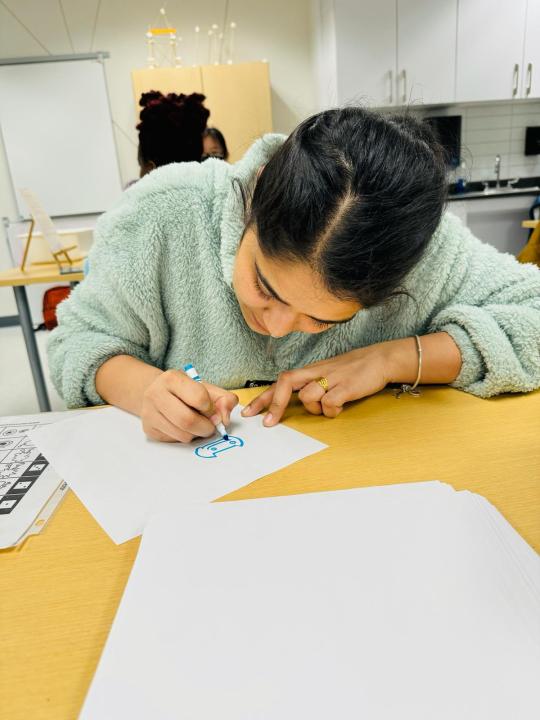
0 notes
Text
0 notes
Text
Name Arshdeep Kaur
Math and Science 320
Professor name: Tamara Faires
A) Choose one of the Stations from the workshop. Discuss how this experience supports the Engineering design process/steps (see class notes). Provide details and examples for each step.
The Table Challenge is my preferred option. For me, this is a really difficult approach. I'm going to go over a few of the engineering design phases below.
What is the problem: I had to create a home, tree, boat, and the initial letter of my name in just ten minutes, which made the task difficult.
Brainstorm idea: I came up with a lot of ideas for this task by using my imagination. For instance, I use different colors and blocks for various tasks.
Design/Invent: shapes and blocks come in extremely useful. In the first exercise, for instance, I loved using blocks to write my name in various colors.
Build/create: I constructed a home. I use a triangle and two, for instance, similar blocks. My house's main door is made out of several blocks.
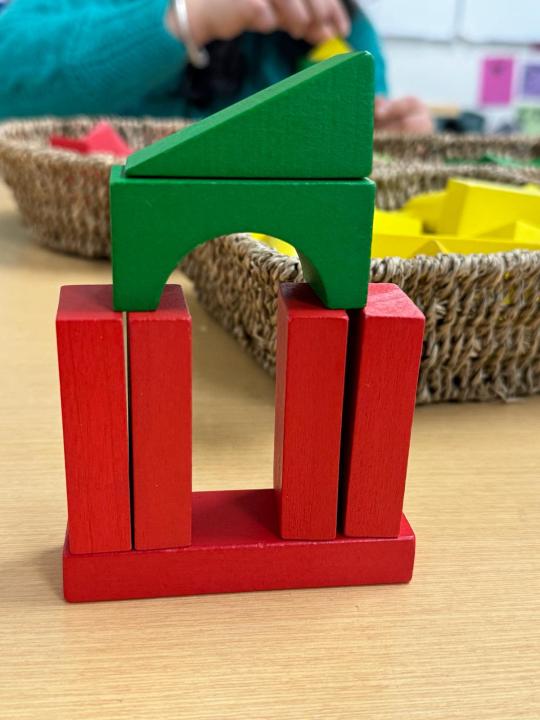
Test and evaluate: I keep notice of and analyze my home to see whether the blocks are flawed in any way. For the main entrance, for instance, I first used just two blocks and placed them nearby, but after testing and evaluating, I used four blocks—two of each—which seems well.
Redesign or modify a design: I changed my mind and utilized different building blocks to create a person.

Share solutions with others: When I exchange ideas with other people, they advise me not to use the same color blocks. It appears attractive if you use different shade blocks.
B) Justify the age group for this experience (experience you have chosen in 1. A). Use references to support your response.
The table challenge is suitable for students in school. I chose school-age children for a variety of reasons, one of which considering that they are capable of understanding how to complete the task in less time, especially with a 10-minute time limitation. School-agers may use their imagination to come up with creative ways to use blocks, even if they are not all the same size. School-agers can use their hand-eye coordination and problem-solving abilities to complete their task. School-age children use their finger and hand-eye coordination. However, infants and toddlers cannot use such skills. They cannot apply creativity and balance. It's a complicated task that they are unable to understand how to deal with the complex time, therefore they get frustrated.
2. Choose your favorite station (activity) from Workshop #4 and explain why. How did the experience help support your understanding of the Engineering Design Process (one example)?
I enjoy completing the Playdough button challenge the most. This is a really enjoyable activity. This task requires both finger dexterity and hand-eye coordination in addition to imagination. The engineering design process has been integrated into this task.
What is the problem: Establishing a balance for a high building is the primary challenge. for instance, I used buttons of varying sizes, thus it was difficult for me to maintain balance because there was more of a risk of falling.
Brainstorm Idea: I started by selecting large buttons to build a 20-meter tower. However, after determining that the height was 12 cm, I switched to smaller buttons first and large after.
Design/Invent: I came up with a plan for a straightforward tower structure that helps in meeting requirements.
Build, create: I construct a tower after a few attempts.
Test and evaluate: it is important to identify the point of weakness first. I then measure the height, and it falls from 20 cm.
Redesign or modify a design: To meet my requirements, I discovered that it is crucial to divide the large and little buttons while building a tower because doing so saves time when creating a tall structure.
Share solutions with others: I just asked others to come join in and give advice so that I could finish the task.
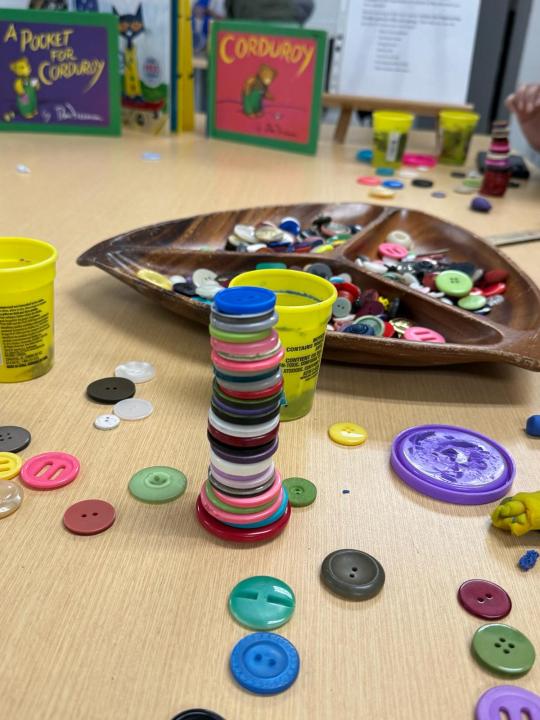
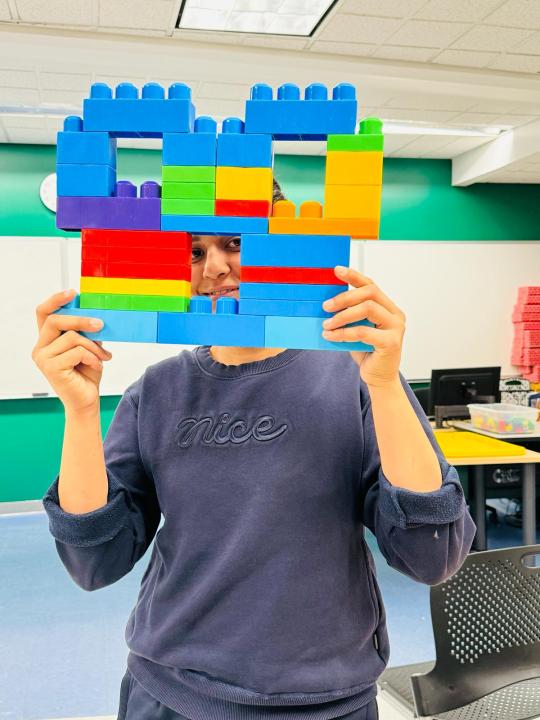
0 notes
Text
Arshdeepkaurmathandscience
Name Arshdeep Kaur
Math and science experience for children (320)
Professor (Tamara Faires)
Identify one new learning/discovery for you based on your participation in Workshop #3. Explain why this is a new learning/discovery for you.
In this workshop, I explored natural clay, paper mosaic, play dough, and modeling clay and wire sculpture which was very enjoyable for me. This is a very enjoyable and challenging experience for me. Children can learn many skills such as hand-eye, coordination, and problem-solving. When preschoolers try again and again to do this activity, it helps them to learn how to use patience, while finding any hurdle and using their imagination to complete any task.
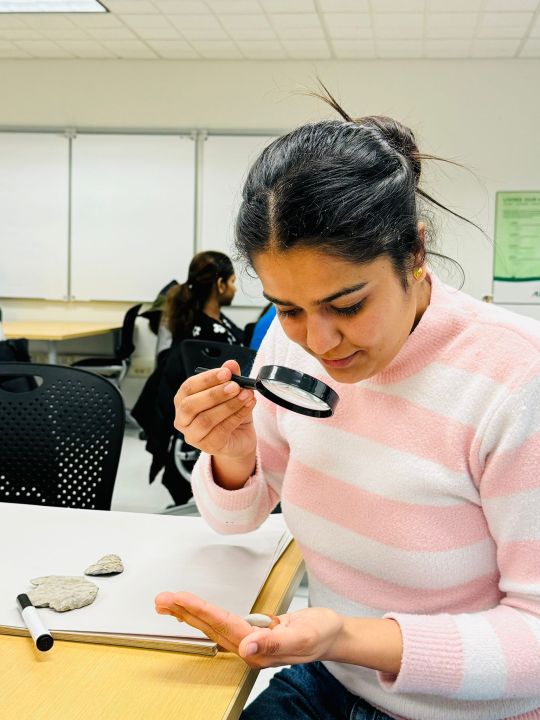
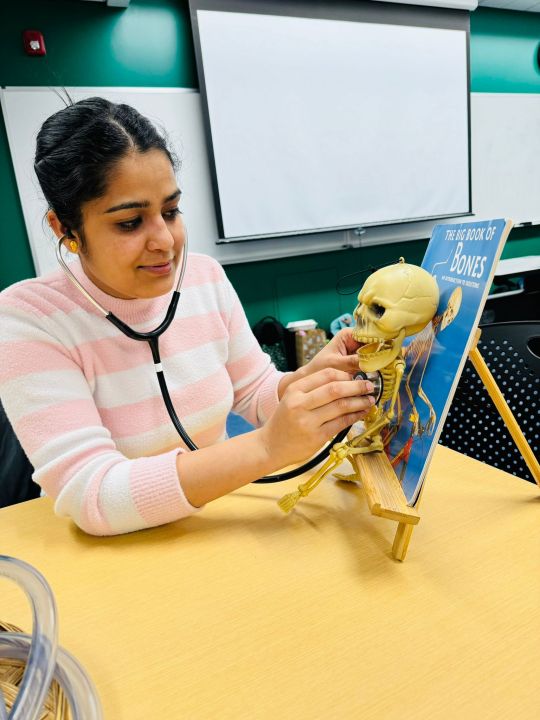
Choose your Favorite activity from Workshop #3 and explain why. What age group is the experience appropriate for and why?
Bubble Solution is my favorite game since it's so entertaining. Preschoolers can do this experiment because they can understand how to make use of all the materials together, such as sugar water, glycerin, and dishwashing detergent. Preschoolers take advantage of this practice by developing their cognitive skills. For instance, when the teacher asked the students to count how many bubbles, they were able to blow, the children would begin to count the bubbles. It enhances children's creativity and builds laughter and curiosity in it. For example, when they think that the item is good for creating bubbles.
3. Identify the branch of science this experiment supports.
This activity supports two branches of science chemistry and physics.
1. Chemistry: preschoolers can learn to mix solutions. For example, during this experiment when preschoolers mix all the ingredients, water, glycerin, and liquid dishwashing soap, water, and sugar with a chemical reaction it starts bubbles. It is a unique experience for preschoolers and they can learn in a fun way. This activity teaches children about scientific principles, like, how to do any experiment and how to protect themselves from any mishappening from any ingredients.
2. Physics: preschoolers can learn about gravity. Using soap, water and all the ingredients makes bubbles, and when they blow in the air, and fall into the ground. It Helps children to think about how to create bubbles and why they fall into the ground. It teaches them the importance of gravity.
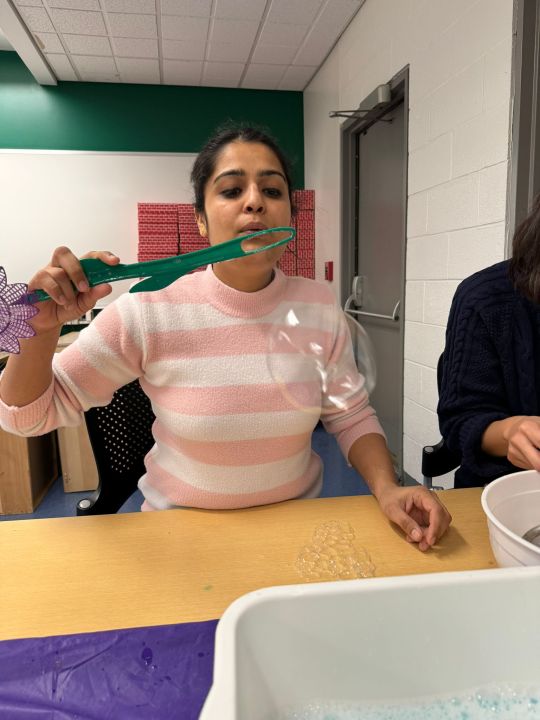
4. Explain how the experience supports children’s learning by providing two (2) examples
1. The experiment learning: Using this activity, preschoolers may learn about the relevance of science to their daily lives. for instance, when preschoolers carry out this experiment. They are aware of several uses of dishwashing soap. Children connect their experiments to real-life events. When there are so many items in our surroundings, they may be reused or used in new ways. As a result, children get more interested and want to do more experiments.
2. Social skills: preschoolers can learn how to collaborate with others. Children can discuss and exchange ideas when working on any activity in a group, for instance, they can encourage their partners to pick up new words from others and help each other.
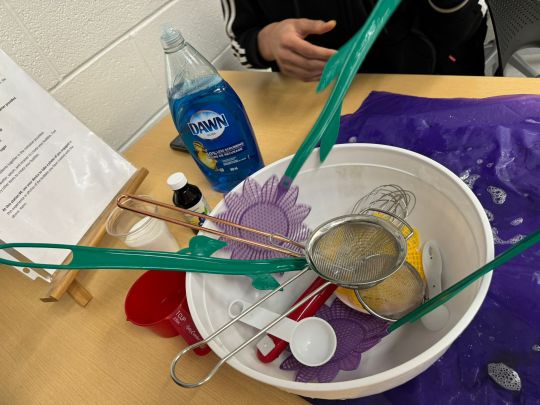
0 notes
Text
Name Arshdeep Kaur
Math and Science Experience for Children (320)
Professor(s): Tamara Faires
The story walks offer children an opportunity to read a story, while on a walk through the park, trail, or neighborhood. The biggest reason for their curiosity is children can get a more spacious environment. They start observing the environment. For example, suppose an educator organizes story walks for children and children see all the images during the story walks, they can raise questions, what’s the color of the pinecone trees? and ask children to find the same color. As a result, children start to make connections with all the things that they read and children become more observant which makes them happy as well as increases their interests, and improves their cognitive development. Story walks provide a chance for children to feel nature. Nature gives them new experiences such as risk-taking, exploration, and open-ended interactions. Children feel more freedom and have a good chance for socialization. During the story walk, children can get a real experience that they only read in stories so, children connect their imagination with the real world. Some children do not like story-reading but when they interact with nature as a result, they give proper attention and concentration. Story Walks help to increase their knowledge. For example, every child reads books about trees and beautiful gardens. After that, children feel a sense of wonder. while reading a book they just imagine all the things but in story walks they have a chance to explore everything.
( in the both picture, I consider myself a bird, and I am trying to fly.)


2. Imagine if a story walk is based on animals. The focus should be on basic elements like the color and movement of the animals. Children can see different animals on every page and also the pictures representing their sounds and actions. Children can easily get attracted to the pictures and start simple movements as animals, like hooping like a rabbit.
Science from a personal and social perspective: children love to see the moon and stars. if educators design a story walk based on a moon and the educator uses basic images of the moon regarding the appearance of the moon at different times. Every picture describes the different shapes and colour of the moon. When children start observing the moon. They have a good chance to explore the moon's different shapes after a few hours. This is a great experience for children to gain science knowledge.

in this picture, i try to pretend to make snow angles in the snow.
in the forth picture, I made a snowball.

3. I will choose the paper bag princess for the story walk. My story walks help children to engage with the story by participating. For example, during story walks when children see all the images, I will ask questions to children, how the dragon flies into the air and when children start showing their body movements. They can enjoy various movements and also, and it will help to connect them with the story and increase their curiosity for observing and participating in every moment. I choose Stella the queen of snow. This participation helps to increase their knowledge. For example, when children see images and touch the snow. They feel the sense and this will help to increase their emotional and cognitive development.
( In this picture,. I read a story and I pretended myself a bee.)
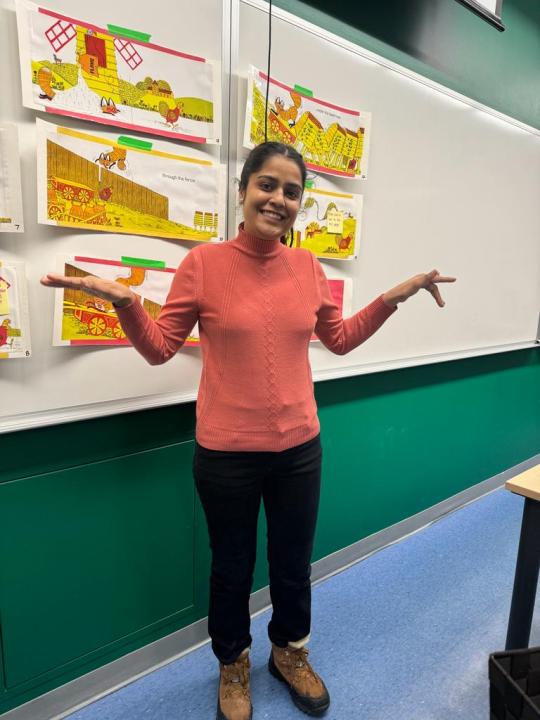

In last picture , i try to count the fruits).
1 note
·
View note